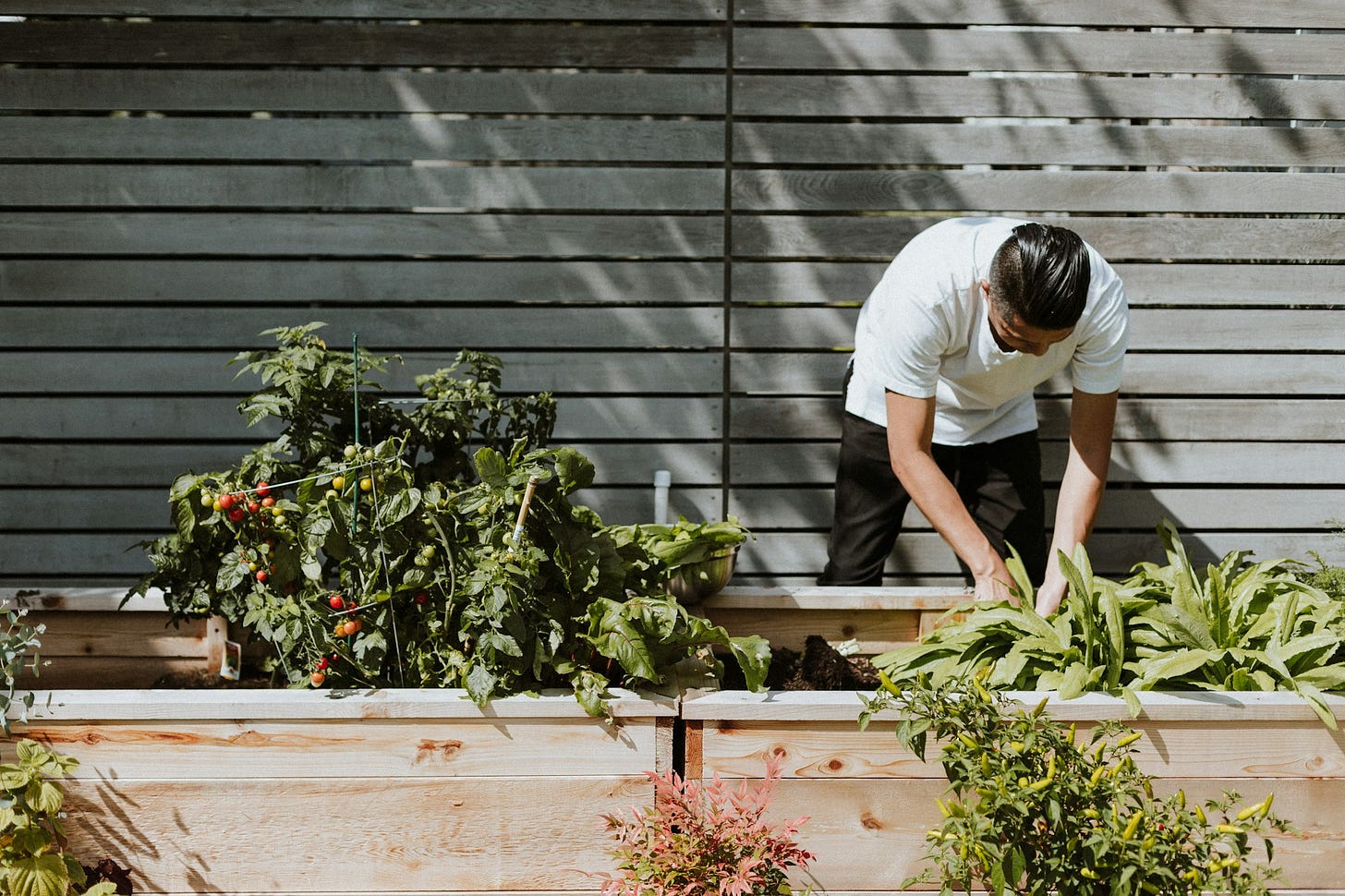How to build a Raised Garden Bed
Raised Garden Beds are quite simple to build if you follow these steps.

Raised garden beds are a great way to grow vegetables in your home, providing an area that maximizes your backyard garden space, gains you better control over the soil, reduces soil compaction and care for your plants easier without having to work them on the low ground. Raised Garden Beds can also be used to grow ornamental plants in otherwise inhospitable areas such as above concrete or heavily compacted soil.
Size of Beds
There should be at least 18" between the planters and any walls or other objects to enable easy access to the side of the bed. If you can access both sides of the bed, the max width should be 36" and consider no more than 24" if you'd like to garden with children. When only one side can be accessed, you should build to a maximum width of 18".
To minimize cutting, select a length for your raised beds that is the same or half the size as a common length for wood: 6ft, 8ft, 10ft are typical lengths found in hardware stores. When designing raised beds for clients, we typically use 3x8ft beds.
The height of your beds should be at least 11" (2 rows of 2x6 boards) to provide good drainage and room for the roots to grow. I prefer to build them to 22" (4 rows of 2x6 boards) for a more comfortable height that requires less bending over to reach your plants, while also remaining low enough for children to access the beds if desired. When building a bed that is higher than 11" and longer than 6ft, it will likely require additional supports to keep the sides from bowing in the form of a cross support in the centre connecting the 2 long sides and/or vertical braces on the inside of the bed screwed into each horizontal board.
Wood
When building a raised bed with wood, the wood is exposed to soil and moisture. Rot-resistant wood is needed for a raised bed. Pressure-treated Wood (PT) is commonly used in landscaping but as this is injected with a chemical preservative, you may not want to use it to build your edible plant beds. Instead, opt for a naturally rot-resistant wood such as Cedar or Redwood. The wood facing inside the beds should be treated with an organic sealer: pure linseed oil or tung oil are both good for this. The organic versions of these oils are slow drying and will require about 3 coats with a drying period of at least 2 days so don't get your soil until it is done curing!
Metal
Raised garden beds can also be constructed with galvanized steel or aluminum but these will be difficult to build from scratch. There are many kits available either in stores or online that can be assembled quickly on-site.
Other materials
Raised garden beds can be built with concrete blocks (Cinder Blocks). A low bed can be made without using mortar making construction very simple. There are some concerns that concrete blocks can leach toxins into your soil due to the fly ash often used in manufacturing, so this may not be a good choice for a bed that will be used for growing edible plants if you are unsure it doesn't contain fly ash. If you feel the blocks you have are safe to use, note that concrete blocks can leach lime into your soil, increasing the acidity of the soil.
Protection from Wildlife
When growing vegetables in your bed, they may become attractive to wildlife who will eat the plants or seeds. Protect from burrowing critters like gophers by installing gopher wire at the bottom of the raised garden bed. Gopher wire is not the same as chicken wire, which will rust when placed in the ground. Gopher wire can be substituted with galvanized hardware cloth.
For protection from above, try building your raised bed with posts in the corners that rise slightly higher than the top of the sides so that netting can be secured to them and lay above your plants. For a higher enclosure, you can use these posts to secure a wooden cage above your bed.




